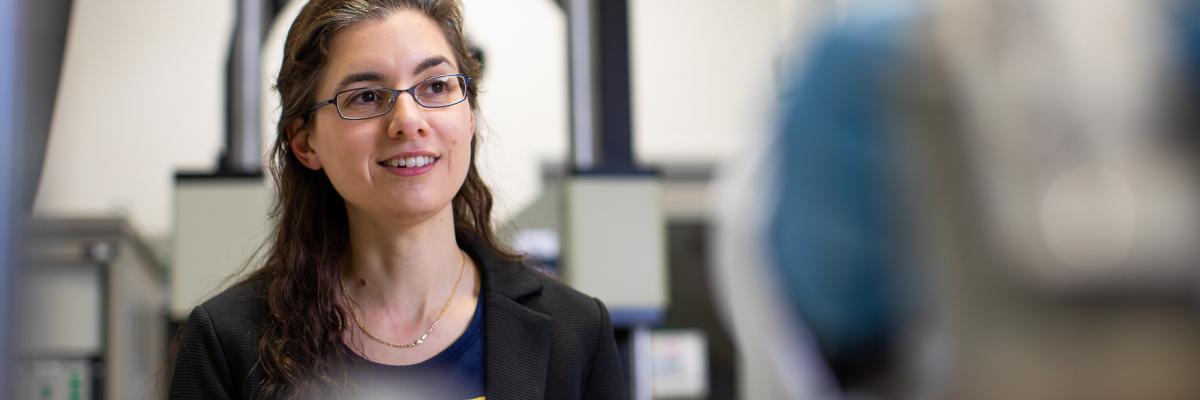Connected Conversations | Claire Jones
In between being a full-time mother of three, Dr Claire Jones balances the worlds of biomechanics and mechanical engineering as she explores the tandem of her multidisciplinary research.

Please tell us a little bit about yourself.
My name is Claire and I’m a researcher and lecturer in biomechanics, jointly appointed across the Adelaide Medical School and the School of Mechanical Engineering at the University of Adelaide. My studies have taken me from the University of Western Australia, Perth, to Leeds, UK, and Vancouver, Canada, but I have been working in Adelaide for the past ten years.
What was your first area of study and what drew you to this space?
I’m a mechanical engineer and chemist, and I apply fundamental disciplines in the study of orthopaedic and injury biomechanics, with a focus on spinal injury and disease, and neurotrauma. I was drawn to this area as it combines complex mechanics with the workings of the human body, with the ultimate aim to prevent and treat injuries and diseases of the musculoskeletal system. My father was a rehabilitation bioengineer, and I have fond memories of visiting his workplace at the Royal Perth Hospital as a small child. I remember thinking that the orthopaedic implants were amazing, and his personal account of working with his clients was inspiring.
What are you working on now?
My research is inherently multidisciplinary and widely varied —no two projects are the same, and we rarely work in isolation. Some of our current projects involve understanding how the neck dislocates and fractures during accidents; designing a better manikin neck to train paramedics in spinal immobilisation; developing pre-clinical models of spinal cord injury and brain injury and using them to understand the body’s response with respect to mechanics and neuropathology; testing orthopaedic implants; and evaluating techniques for lifting that reduce spine loading.
What do you love most about working at the University of Adelaide?
I enjoy working with my team of motivated and hardworking students and staff, and our scientific and clinical collaborators, to solve multidisciplinary challenges with real-world implications. In the Adelaide Health and Medical Sciences (AHMS) building, we have built an amazing biomechanics laboratory filled with fantastic apparatus and equipment and, together with the SAHMRI pre-clinical research facility, we have a platform to do great biomechanics research at the University of Adelaide. I also love teaching and supervising undergraduate students in mechanical engineering, health sciences, and medicine, and giving them an insight into biomechanics research.
Why would you encourage some to pursue a career in health?
There are so many ways to pursue a career related to health, so many fundamental disciplines have a role to play in all aspects of improving health care and injury prevention. Health care delivery, health and medical, research and medical technology development can make a huge impact on individuals, families and society as a whole.
What do you do in your spare time?
With three kids under five and a double-academic household, ‘spare time’ is not in my vocabulary!
What are your hopes for 2021?
To continue to grow my research group and give my research students a memorable graduate experience, to expand and develop my teaching roles across the health and medical sciences and engineering faculties, to continue to build stronger bridges between medicine and mechanical engineering in undergraduate teaching and postgraduate research… and to finally submit all of those papers that are partway finished.
Name three things you won’t forget about the past year…
- Successfully completing our first study with Australia’s only pre-clinical model of spinal cord injury that was developed in Adelaide.
- Finding solutions to our many challenges in the biomechanics laboratory with my PhD and Honours students and my talented postdoctoral and research technician.
- Welcoming our third child, and first daughter, into the world.
